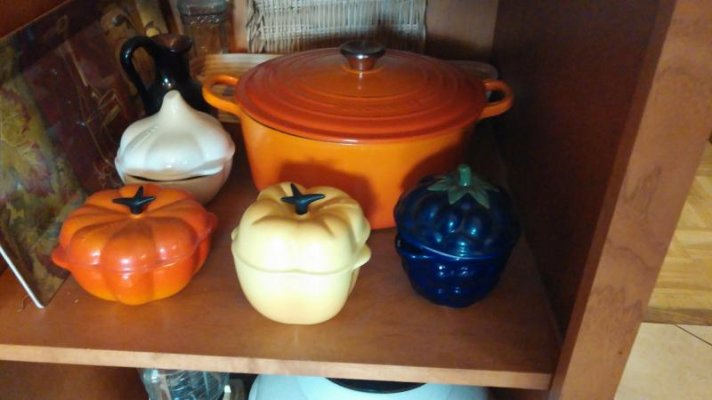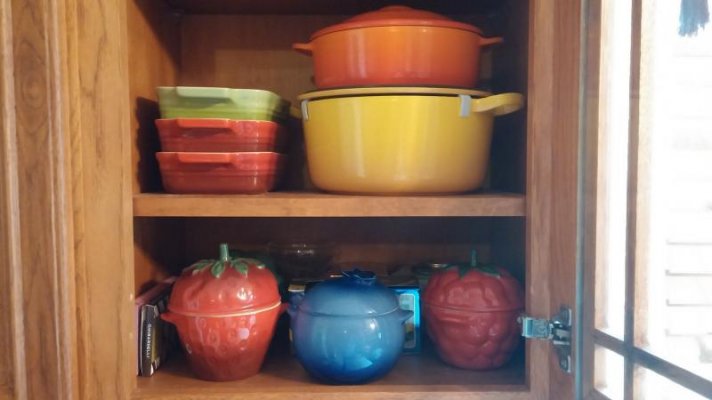Cast iron as cookware has a long history. It predates stainless steel, try-py, teflon, etc. It was originally used with open fires in colonial kitchens or out on the move.
Over the years, other materials have been introduced that have other beneficial properties. With gas and electric stoves and ovens, maintaining even heat throughout the cooking process is no longer an issue that relies on cookware material. Stainless triply brings other qualities to the game.
I do not believe two identical stews, pot roasts, etc., one cooked in a stainless try-ply pot and the other in cast iron (enameled or not) would taste different.
+1
The only place I truly see cast iron has an advantage is in its versatility, and I'm talking about seasoned cast iron, not enameled. And I'm not convinced that searing is best done on cast iron, due to its poor thermal conductivity. I have found that cast iron develops hot spots, or in the case of my gas stove, a hot ring where the flame touches the metal. This creates places on the meat that are nearly burned by the time the remainder of the meat is properly seared. If I want an even temperature on the cooking surface, I have to use a diffuser under the pan/pot.
The true advantage of my cast iron, bet it my dutch oven, or any of my pans, is that they are virtually stick free, and can be placed over a camp-cooking fire, and they are nearly indestructible.
The real benefit of my cast iron, to me, is nostalgia. I'm using the same kind of cookware that my Dad used, my Mom used, my Grandparents used. As they have all passed on, it helps me sort of keep a thread in place between us until I get to meet them again when I pass from mortality. The fact that I know how to keep it properly seasoned, and that it is very functional, and that I can pass it all down to my own children, who would really like to have it, well, that's all gravy. I guess the idea that I will hand it down is right up there with the pots and pans helping me to remember my own parents and grandparents.
As Andy stated, there are other pans out there that will perform as well, or better at many things. Earthenware pots are probably better for stews, beans, soups, and slow-cooked sauces; while the quick heat exchange from heat source to food will give a better, more even sear using clad copper, or ceramic coated aluminum, if a higher heat is maintained under the pan. SS is great for soups, eggs, anything boiled, acidic, or alkali foods, and iff you know how to use it, is nearly stick free for frying things, while using with a little bit different technique will give you great fond for pan gravies. And for SS to work, it must be triply, or have an encapsulated bottom with a middle portion made of a highly conductive metal such as copper, or aluminum. Otherwise, it suffers from the same hot spot problems as does cast iron.
Learn the pros and cons of every pot and pan you have, and choose accordingly. I use my CI the most, followed by SS, and finally, hIgh quality non-stick coated aluminum.
That's my honest answer, and info to the best of my knowledge.
Seeeeeeeya; Chief Longwind of the North





